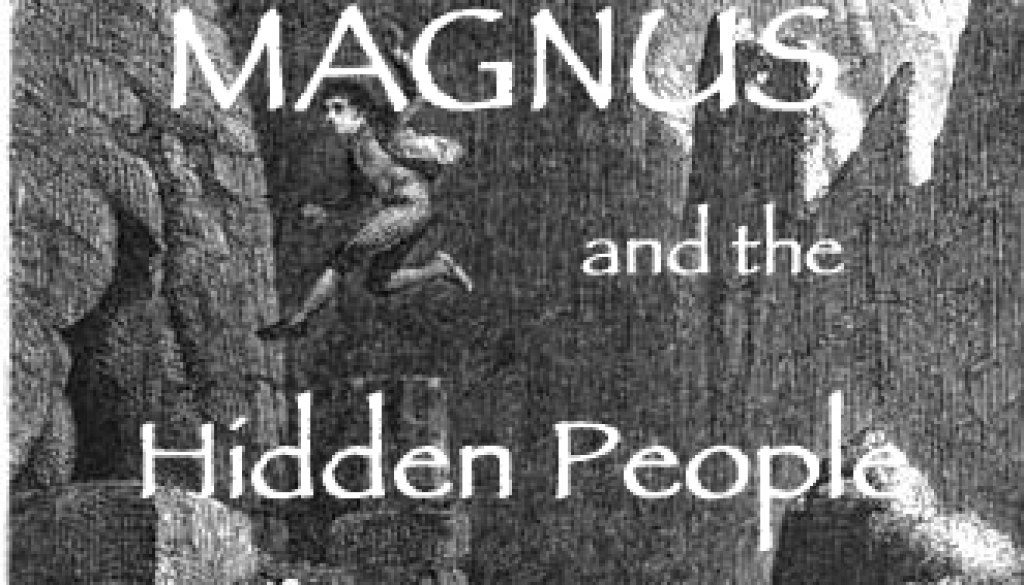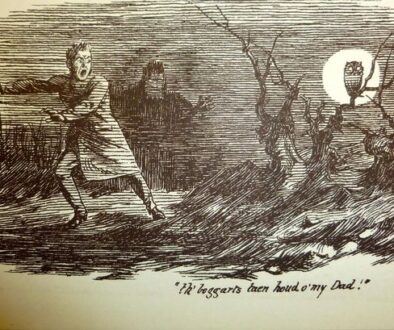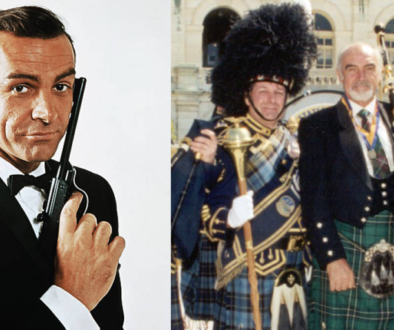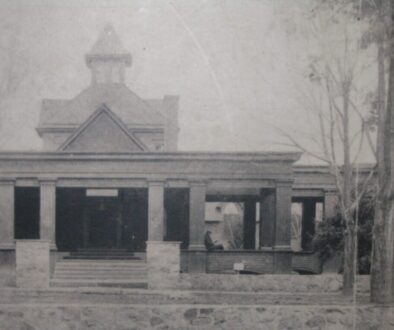Magnus and the Hidden People
Traditions about races of magical, more-or-less human beings – fairies, leprechauns, Little People – exist in the folklore of many parts of the world. If the average person has an impression of their cultural origins, he or she probably thinks most often of Ireland. The Irish certainly stand out for their reverence and even pride in their own supernaturals, the Fairies, and their storytellers have had centuries to weigh in and make even more of them. There is a country that at least for a living tradition seems to outrank them: Iceland. To this day, the level of Icelanders’ belief in their own version of the fairies, the Hidden People, the Huldufólk is so astonishingly high that it’s even become an element of their national tourism.
Most of you know of the Lily Dale Assembly Spiritualist community in Cassadaga, NY. In-season, Lily Dale provides a diverse program of talks and workshops that are not just for the Spiritualists. I’ve given many a talk there myself, generally on supernatural folklore and tradition, including that of the Celtic and Native American cultures. In the summer of 2013 I was thinking of attending a workshop that had stood out when I scanned the year’s program, a study of Iceland’s Hidden People led by Magnus Skarphedinsson, Iceland’s acknowledged expert.
There were two reasons I didn’t sign up for Magnus’ class. One was its length. This was a full day session. I was also afraid that the presentation might be less about mythology and more about a walk in the woods aiming to “experience” the Hidden People at Lily Dale. My big regret was passing up the chance to meet and talk to the leader of the workshop, a specialist in this rarified subject in a nation in which it may be more powerful and public than in any other.
On Monday morning, July 1, I got an e-mail from Patricia Bell, Ph. D., inviting me to a small celebration at her house in Lily Dale for her guest, the speaker himself, Magnus Skarphedinsson. The night happened to be his birthday, and my friends Dr. Patricia and Tom Cratsley were his informal hosts. Apparently people at Lily Dale had told Magnus about my lecture in the summer of 2012 on the fairy traditions of the Iroquois/Algonquin societies, and he wanted to compare notes.
As I parked along the street by Patricia’s house I found Tom Cratsley standing at the foot of her stairs talking and being filmed by a solidly-built man with short dark hair and a sketchy beard. I presumed this was Magnus. By the time I had found my parking space their interview was done, and I met the esteemed elf-expert.
Magnus Skarphedinsson runs an academy in Reykjavik devoted to the Hidden Folk, whose traditions have become his life’s study. The commercial side of his enterprise is an entertainment experience somewhat like my own ghost walks, but also like my own ghost walks, there is serious scholarship and expertise at its core. Magnus’ enterprise, like mine, is a summation of generations of academic folklore and contemporary human experience. He was working on a documentary for an Icelandic TV program and wanted to interview me for it. He found me a seat in an armchair in the living room of Patricia Bell’s pleasant summer house, adjusted the lighting, and adjusted his camera. His English is very good, and it was quite easy to talk to him.
Magnus comes to this subject of “the Hidden Folk” like someone who interviews so many startled eyewitnesses that he can’t help but acknowledge a touch of belief. I had to clarify my position at the start.
When it comes to supernatural subjects, too many people either do not know or do not accept that there could be a viewpoint between dreamy, New Age belief and hard-headed materialism. As is the discipline of parapsychology, I am at that in-between viewpoint. I believe psychic phenomena exists; I do not believe every story I hear, nor do I ascribe motives or develop explanations for phenomena that is inscrutable and sketchy.
As I made this point with Magnus, I referenced parapsychology and took as an example the recently-late Dr. William Roll. I pointed out that Roll – a great defender of the idea that psychic phenomena of some sorts does exist – would have been the wrong person to approach for the confirmation of one’s own emotionally-held spiritual beliefs. Roll was a researcher. He thought like a scientist. As part of his defense of his discipline, he stood for complete objectivity in the study of these very difficult subjects. He was a hard-ass.
“Roll did a book on the Hidden People, you know,” I told Magnus, not really doubting that he had heard of it. “He either wrote it or introduced it.”
Magnus smiled and nodded as if the two were old friends. “I helped him produce that book. And the film.”
He seemed sincerely hurt to hear that William Roll had passed away in 2012. He took a moment to settle with it. Then he commenced his interview about my research and experiences in upstate New York concerning our own “hidden people,” the Iroquois fairies.
Magnus filmed me as I answered a number of questions, most of them about Little People traditions among the upstate Iroquoian people past and present. He listened thoughtfully to my replies. Obviously, he was making connections to his own study. He seemed to be taking the Icelandic Hidden People and the fairies of Iroquois tradition to be just about the same thing. I was so busy answering questions in sound-bites as you do when you are an interview subject that I did not think to correct him.
There are of course conspicuous general similarities between the two groups of folkloric supernaturals, but I do not think these traditions should be presumed to be closely aligned.
The Icelandic Huldufólk are most often portrayed as the size of adult humans. The Iroquoian alter-beings are almost always envisioned to be smaller even than human children. All these folkloric beings are presumed to be shapeshifters, of course, which means they would all be size-morphic. But when the wonted forms in which they appear are so consistently different, I think it is a factor in arguing for their separation.
I also believe the folkloric origins of the two traditions could be different. The odds seem pretty good that when the Icelandic Vikings brought Irish captives back with them, the Icelandic Hidden Folk traditions were born. Though doubtless they are a mix of both Scandinavian and Celtic influences, the Hidden Folk are similar in many ways to the Celtic Sluagh Sidhe (Sloo Shee), the trooping fairies, some communities of which are envisioned as human-size.
There are many similarities between the Iroquois Little People and some echelons of the Celtic fairy-folk. Some commenters like to make the connection and speculate that Irish immigrants may have seeded the North American tradition. I see no good evidence of that, especially with the Iroquoian tradition. Iroquoian tradition seems simply older than European contact. Items found in some very old Iroquoian burials – like miniature tools and weapons and small, shiny crystalline stones – suggest tributes to the Little People, which in turn suggests that the Iroquoian Little People predated Columbus by at least several centuries.
I remember Magnus’ questions a lot better than my answers. A few of each are below.
Why did you get into this subject?
Magnus had asked my friends to invite me to answer questions about the Native American Little People, and I presumed that this was what what “this subject” meant to him. I explained that I was first exposed to the supernatural traditions of the Iroquoian people as part of the research for my first book, Shadows of the Western Door (1997), a survey of the paranormal history of Western New York. I have also done thousands of interviews with eyewitnesses to supernatural experience. Almost from the beginning I noticed patterns among the reports, even cultural components.
Among the apparition-forms that turned up was a special category of “ghost,” to the eyewitness, one that was unnaturally small. While this is a rare category in the big picture of upstate ghosts, it is well represented in my files, and it has its own patterns of overlap with the classic fairy lore. And very young children sometimes have imaginary friends – or tormentors – who fit most descriptions of the Little People.
Why do you think tradition is dying out on the Reservations?
“It’s doing that everywhere,” I should have said. “And new tradition is being formed.” Only when something is written does it cease to be plastic. But again I took this to be a question about “Little People” lore and other supernatural traditions among the Iroquois.
“Interest in traditional culture is diminishing among the Iroquois,” I answered, “but there may be a bit of a revival going on. There are culture-preservers out there. I think of myself as one of them, though I’m not Iroquois. You don’t have to be Iroquois to admire Iroquoian tradition.”
Why do so few people see the Little People any more?
“One reason could be,” I said, “that we have lost our belief. The Little People aren’t close enough to the mass consciousness to be imagined out of a visual experience of natural phenomena. Another could be that there are a lot of distractions on consciousness these days. We aren’t stuck with just the natural world, conversation, and reading anymore. Even in the last ten years… cell phones, Facebook… I think this has a major effect on human perception. Our minds are changing. It’s like we can’t see the things we used to see, at least if they take concentration. If you have to be sensitive to see certain things… We are becoming desensitized, at least to supernatural-spiritual things. We are also becoming urbanized. How many of us spend much time in the natural environment any more?
“Of course the other alternative is that the Little People are appearing to us less. Maybe they are sick of what we’re doing to the natural environment and don’t show themselves as often.”
Is it hard getting Little People stories from Native American sources?
“Impossible would be the better word,” I answered, “at least from the Seneca or the Onondaga, especially if you just come up to them cold-turkey. This tradition is very private to most people in the Six Longhouse Nations. If you know anything about their attitude to it, you don’t push. In my view, the only way to approach living Native Americans is with a broad exposure to what has been written about their tradition. You can’t come to them as a beginner and expect tutorial. That’s not respectful.”
Do you know people who have seen the Little Folk?
“I know people who say they’ve seen them,” I told Magnus. “My late Tuscarora friend, the elder Ted Williams, believed that his father had had a steady confidant among the Little People, a lifelong friend, in fact, who helped and guided Eleazar Williams all his life. And a lot of the witnesses around New York State are white people, often children, who don’t know the legends behind what they say they are seeing.” He seemed impressed to hear how recently eyewitnesses have reported developed incidents. He seemed shocked by the understanding that this is a vivid, living tradition in New York State, too, though seriously underplayed in the pop supernatural. When he pressed for dates, I acknowledged the difficulty of being precise.
“Most of the stories I get are ten years old,” I said, “Most of my subjects don’t remember the exact year, much less the date. I would say that the most recent Little People sighting I have heard of was in 2010.” While Hidden Folk traditions are current in Iceland, this seemed to impress Magnus about this part of the United States. I don’t think he was prepared for the tradition to be so strong.
Why do the Little People take children?
“I can’t tell you why or even if they do that,” I said. “I can tell you that it is something that’s associated with the Little People everywhere they exist in world tradition. In the cliche, it’s what they do, at least some of them. It’s in their nature.”
Magnus frowned and thought hard after that. The Icelandic Hidden Folk were sometimes thought to take children, and this was obviously a difficult subject for him.
Do you know anyone who was taken?
“I know people who report people they know being taken. Disappearing for days or weeks as children.”
Did they come back… all right?
I knew instantly what he was getting at. A stream of associations went past me in a flash.
In Celtic countries the tradition is old and strong: People who spend significant time with “the Little People” are never the same when they come back. They come back with a gift like poetic or musical talent, or… it’s all too much for them. Most of them fit poorly into the life the rest of us live. In Ireland, the insane were thought to have been “taken” by the Fair Folk; their glimpse into that Other-world in which the fairies dwell made this one to which they had returned seem drab, dull, and frustratingly slow-moving. No wonder they would be agitated with our world or prefer to try to escape it, dwelling in their remembered visions of what the Gaels called Tir na Nog (Teer na Noge), “Land of the Young.” This may be the source of our shorthand term for being addled – “touched” – meaning, “touched by the Fays.”
This tradition about the fateful touch of the alter-beings seems muted among the Iroquoian nations, but it exists. I know someone who lives on the Cattaraugus Reservation who maintains that one of her uncles was taken briefly as a boy, and that he was never right the rest of his life. I processed all this and smiled grimly as I replied to Magnus’ question. “Always different.”
Magnus’ brows furrowed, and he stopped for a moment as if he was both troubled and yet satisfied by what he had been told, as if it fit into a pattern that had been long in forming for him.
“In Iceland we know many people we think were touched or taken by the Hidden People,” he said. “Sometimes they never come back and you don’t know what becomes of them. Sometimes a parent sees them walking off with someone strange, in old-time clothing, and runs out, and rescues them before it is too late. Sometimes they disappear for awhile and then come back. But…” He shook his head sadly. “They are never the same.”




